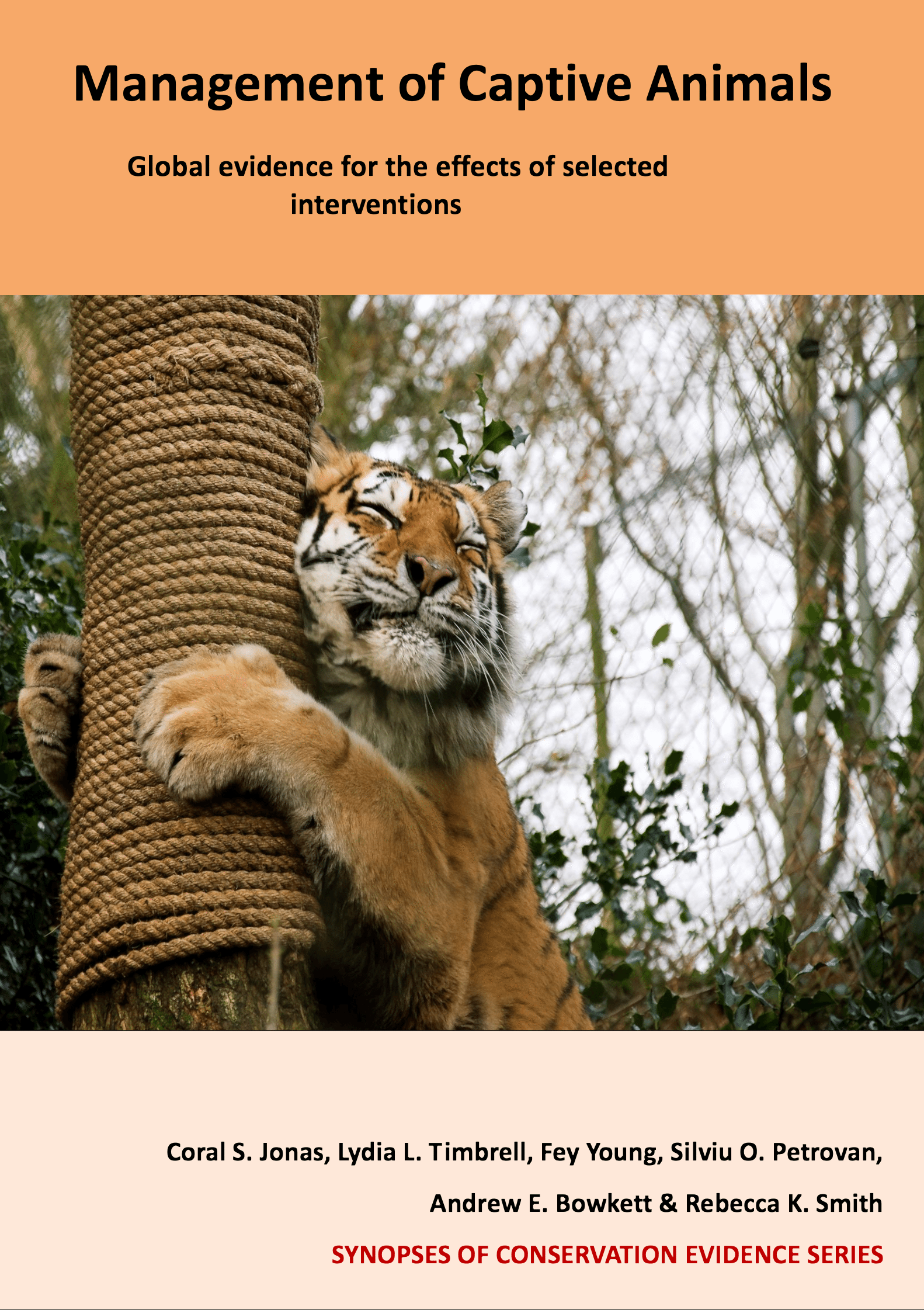Primates: Present food in puzzle feeders
Overall effectiveness category Trade-off between benefit and harms
Number of studies: 3
View assessment score
Hide assessment score
How is the evidence assessed?
Effectiveness
55%Certainty
80%Harms
60%
Study locations
Supporting evidence from individual studies
A before-and-after study in 1992 in the UK (Gilloux 1992) found that presenting food in puzzle feeders increased foraging behaviour and the use of tools in chimpanzees Pan troglodytes, gorillas Gorilla gorilla gorilla, and orangutans Pongo pygmaeus pygmaeus compared to food being placed in the enclosures. The percentage feed orientated behaviour, including tool use, increased from 2% when food was placed in the enclosure to 30% when a puzzle feeder was introduced to orangutans, 2% to 20% for gorillas and 3% to 30% for chimpanzees. An open-ended 3 m length of 15 cm diameter plastic drain pipe, attached horizontally to the outside of the enclosure weldmesh, was used with each group of apes (four gorillas, seven chimpanzees and two orangutans) studied for 12 two-hour trials with food placed into the enclosure and 12 two-hour trials with food in the feeder. (CJ)
Study and other actions testedA replicated, before-and-after study in 1996 in the USA (Schapiro et al. 1996) found that when artificial turf foraging mats and acrylic puzzle feeders were provided separately to rhesus macaques Macaca mulatta more time was spent feeding and less time inactive than when pellets were fed. Using the artificial turf mats the time spent feeding increased from 14 minutes/hour when pellets were fed to 20 minutes/hour when artificial turf mats were provided. Inactivity was lower with artificial turf mats (two minutes/hour) than when just pellets were provided (five minutes/hour). When given the acrylic puzzle feeder’s time spent feeding increased from 14 minutes/hour when pellets were fed to 18 minutes/hour when acrylic puzzle feeders were provided. Inactivity was lower with acrylic puzzle feeders (two minutes/hour) than when just pellets were provided (five minutes/hour). The individually housed monkeys (n=63) were presented with mats and puzzle feeders loaded with 20g of seeds or grain every 1.5 hours, during which 15 minutes of animal observations were conducted on all monkeys. Artificial turf mats and the acrylic puzzle feeders were presented to each monkey every weekday for six months, with control observations when just pellets were provided, conducted for six months between times when enrichment devices were given. (CJ)
Study and other actions testedA before-and-after study in 1998 in the USA (Rapaport 1998) found that the increased difficulty level of finding food distributed in puzzle feeders (but not the amount of food given) decreased food sharing and increased aggression in golden lion tamarins Leontopithecus rosalia. The mean frequency per minute of food sharing went from 0.25/minute with the simple task to 0.15/minute with the complex task. The mean frequency of aggressive behaviour went from 0.05/minute in the simple task to 0.15/minute in the complex task. A 15 hole puzzle box containing grapes behind sliding doors was installed for 40 days. Four, eight or twelve grapes were given and two difficulty levels established: the animal either had to reach into a tube to retrieve the grapes (simple) or rummage and rip away a barrier to retrieve the food (complex). Two observers recorded the monkeys (n=4) food transfer behaviours and aggression until all grapes were consumed. (CJ)
Study and other actions tested
Where has this evidence come from?
List of journals searched by synopsis
All the journals searched for all synopses
This Action forms part of the Action Synopsis:
Management of Captive Animals
Management of Captive Animals - Published 2018
Captive Animal Synopsis




















